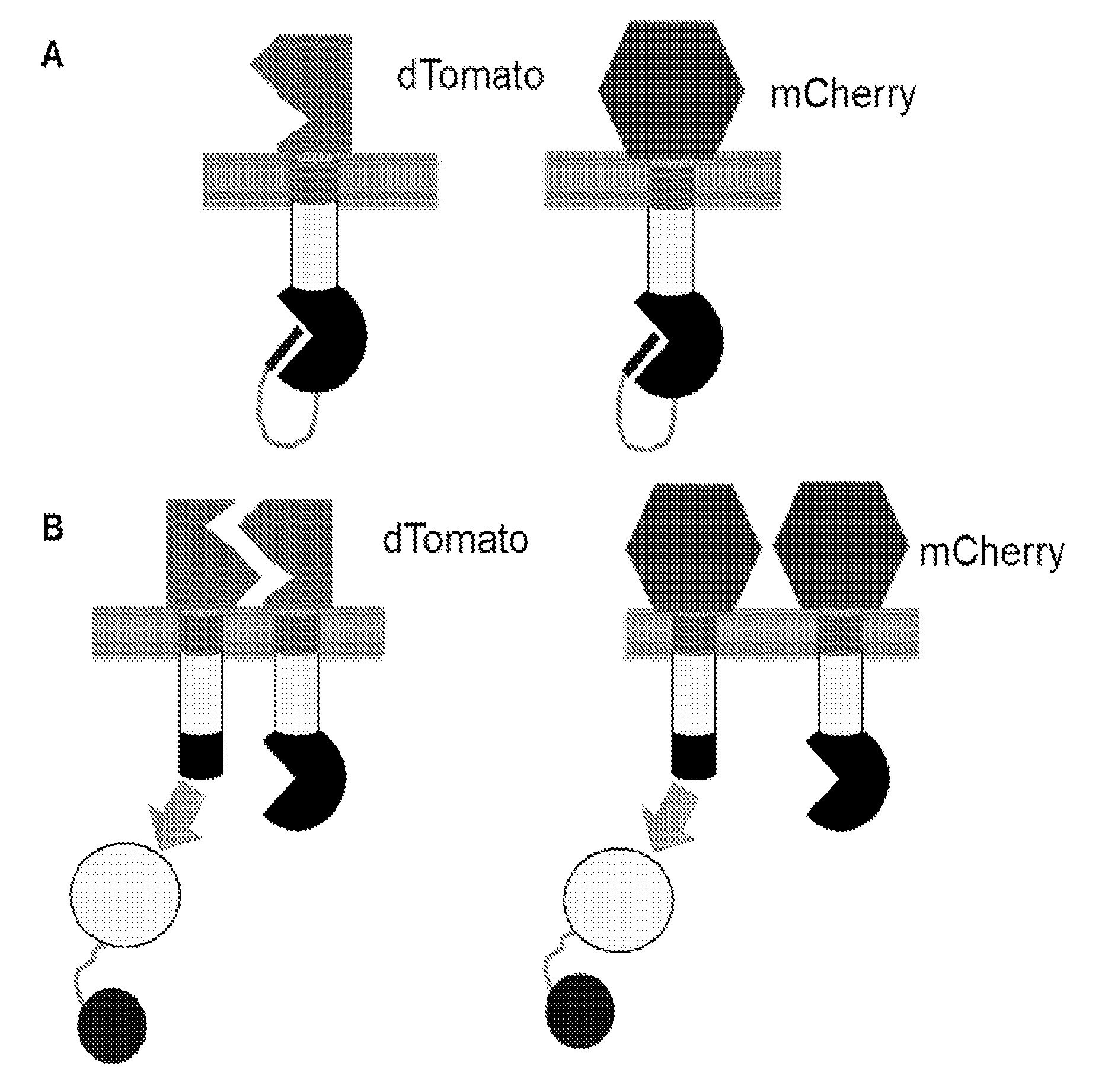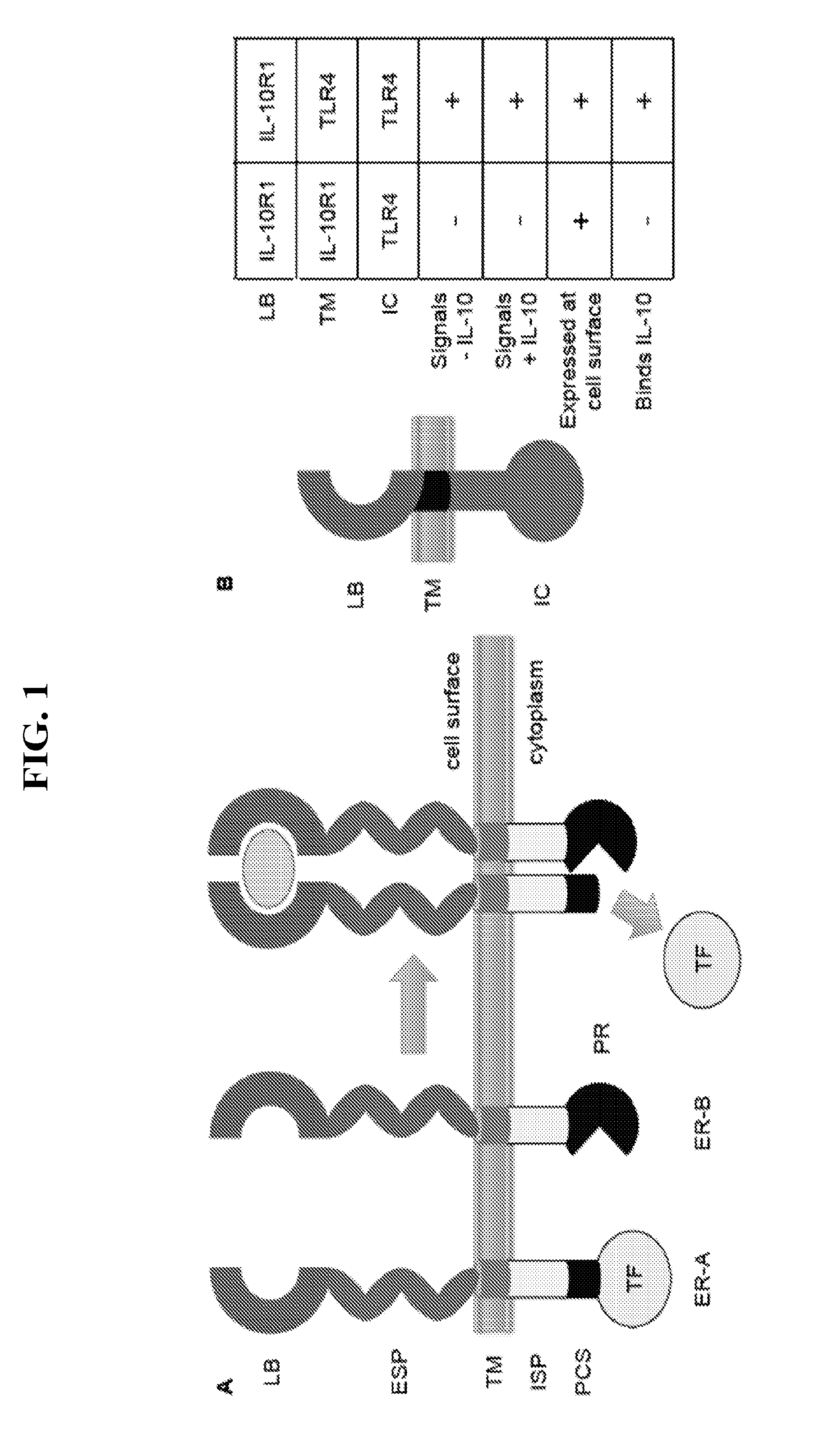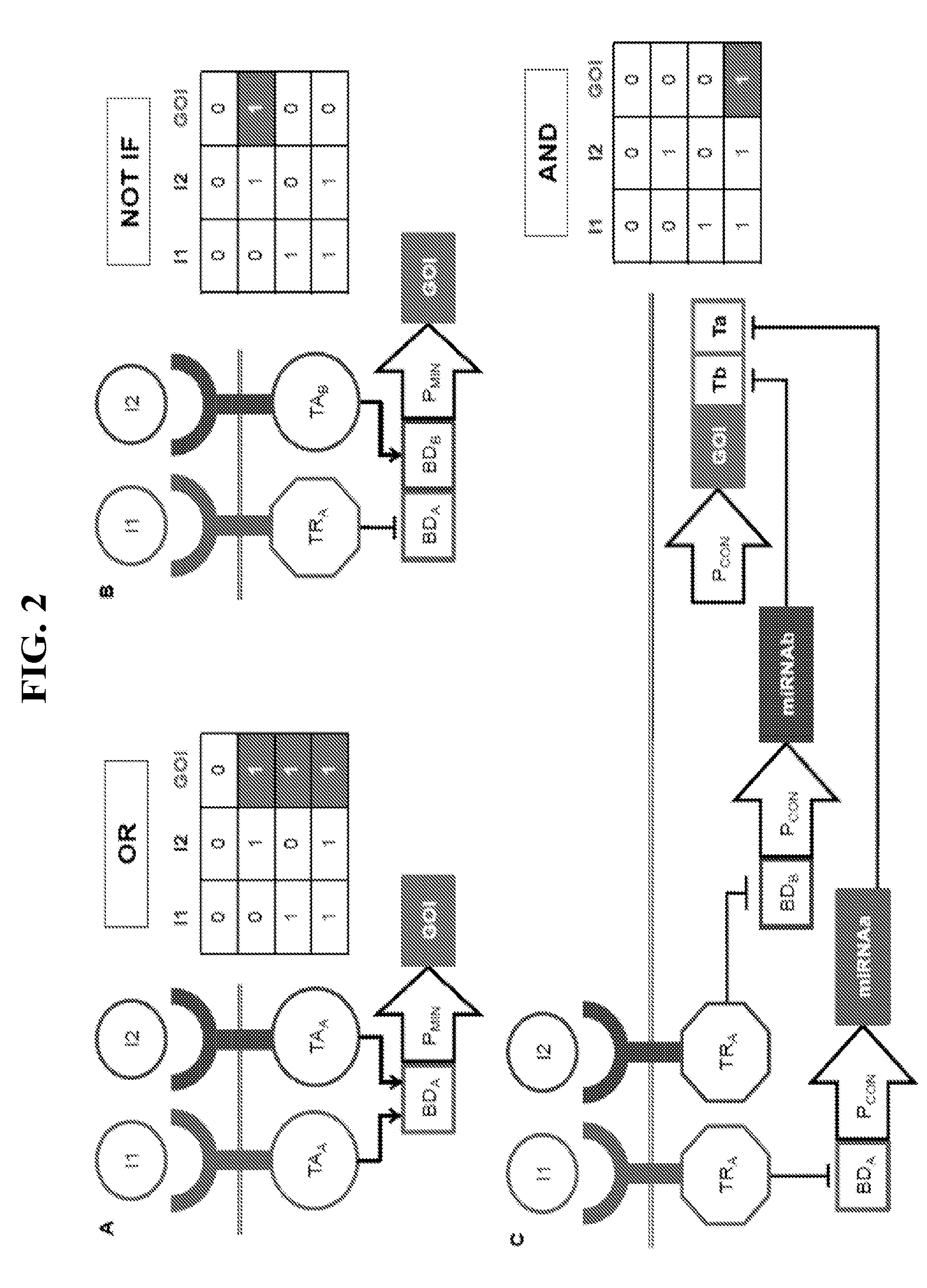Modular extracellular sensor architecture for cell-based biosensors
a cell-based biosensor and module technology, applied in the field of modules of extracellular sensors, can solve the problems of not being efficient (or even possible) to transfer reporter systems, not well-suited to robust biosensor engineering, and complicating the interpretation of reporter gene outputs
- Summary
- Abstract
- Description
- Claims
- Application Information
AI Technical Summary
Benefits of technology
Problems solved by technology
Method used
Image
Examples
example 1
MESA Receptors
[0079]This Example describes exemplary MESA constructs with various protease cleavage sites (PCSs) and intracellular spacers (ISPs) that are absent (zero amino acids) or six amino acids in length.
[0080]It is preferable that the receptors in the MESA platform signal as little as possible in the absence of ligand (e.g., system exhibits low background) and that dimerization / multimerization induces enhanced reporter output (e.g., system exhibits adequate signal-to-noise). In order to investigate how features contained in the intracellular domains of the MESA receptor chains impact these performance characteristics, a series of model MESA receptors were developed that serve as limiting cases because their extracellular domains interact in a predictable, ligand-independent fashion (FIG. 3).
[0081]Receptors incorporating mCherry ectodomains do not interact by any known mechanism, so these receptors provide a measure of diffusion-limited behavior (contact occurs only via random...
example 2
MESA Receptors with Inhibited Proteases
[0086]This Example describes exemplary MESA constructs with self-inhibited proteases and fluorescently labeled transcription factors.
[0087]As part of this Example, MESA constructs were altered by replacing the highly active version of TEV that is commonly used in molecular biology (used in Example 1) with an auto-inhibitory variant of the TEV protease (FIG. 5). The highly active TEV variant is mutated to prevent autocleavage, since wild-type TEV is less active after it autocleaves post translationally (6). In the native TEV protease, the cleaved “tail” of TEV remains associated with the catalytic site where it presumably competes with other PCS ligands (7). Therefore, in this Example, an autoinhibitory TEV variant (TEV-AI) was designed that includes the WT TEV sequence up through the cleaved tail, and it was incorporated into PC designs (FIG. 5). In another variation, the tTA domain was genetically fused to BFP (blue fluorescent protein) to ena...
PUM
| Property | Measurement | Unit |
|---|---|---|
| volume | aaaaa | aaaaa |
| nucleic acid sequence | aaaaa | aaaaa |
| length | aaaaa | aaaaa |
Abstract
Description
Claims
Application Information
 Login to View More
Login to View More - R&D
- Intellectual Property
- Life Sciences
- Materials
- Tech Scout
- Unparalleled Data Quality
- Higher Quality Content
- 60% Fewer Hallucinations
Browse by: Latest US Patents, China's latest patents, Technical Efficacy Thesaurus, Application Domain, Technology Topic, Popular Technical Reports.
© 2025 PatSnap. All rights reserved.Legal|Privacy policy|Modern Slavery Act Transparency Statement|Sitemap|About US| Contact US: help@patsnap.com



